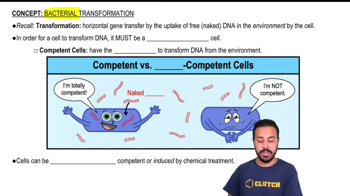Multiple Choice
The bacteria that Griffith experimented with were termed "R" and "S" bacteria because:
4375
views
41
rank
 Verified step by step guidance
Verified step by step guidance Verified video answer for a similar problem:
Verified video answer for a similar problem:



 8:56m
8:56mMaster The Griffith Experiment with a bite sized video explanation from Jason
Start learning